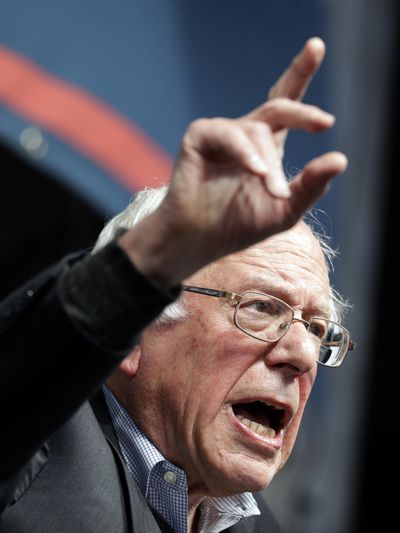Sanders wins Indiana, keeps movement alive

INDIANAPOLIS – Sen. Bernie Sanders remains on track to lose the Democratic nomination race, but he nonetheless managed to keep his agenda at the center of it with a victory in Indiana over front-runner Hillary Clinton.
The lone state that voted Tuesday was a test of the continued potency of Sanders’ fight as the Vermonter sought to maintain his political revolution as a force with which Clinton will need to wrestle.
Because the Democrats distribute delegates proportionately according to each candidate’s vote totals, the two will split Indiana’s 83 pledged delegates roughly in half. That result would benefit Clinton, who is closing in on a delegate majority.
Clinton’s campaign clearly signaled its lack of concern about the outcome here, spending no money at all on television advertising, in contrast with the roughly $1.5 million Sanders spent.
Clinton has built a lead of roughly 300 pledged delegates over Sanders. Combined with the superdelegates who have vowed to support her at the party’s nominating convention in Philadelphia in July, the front-runner has already secured 90 percent of what she needs to lock up the nomination.
Sanders needs overwhelming victories in the remaining primaries to overtake the former secretary of state.
An exit poll showed Sanders continuing to enjoy strong support from younger voters and also revealed that in Indiana, as in other states, the overwhelming majority of Democratic voters felt the spirited primary campaign had energized their party.
About half of those polled wanted a continuation of President Barack Obama’s policies, while roughly a third wanted a more liberal agenda in the White House.
The demographics of the Indiana electorate, which is heavily white, were particularly favorable to Sanders, who does best in states with smaller minority populations. The rules in Indiana, a state where independents can vote in Democratic primaries, also helped the insurgent candidate.
Sanders also benefited from his arguments against U.S. trade agreements; the state’s workforce has been hit hard by the offshoring of manufacturing jobs.
Despite a string of setbacks in recent weeks, Sanders kept up the unrelenting pace here that has defined his run. He campaigned vigorously throughout the state, speaking at the kind of large rallies at college towns that initially sparked his movement and set in motion the fundraising machine that until recently had been outperforming Clinton’s.
He vowed to continue racking up delegates and to use them to push the Democratic Party in a more progressive direction, regardless of whether he is the nominee.
“We are going to create an economy that works for all of us, not just the 1 percent,” Sanders said at a campaign rally in Louisville, Kentucky, on Tuesday night.
Clinton has largely ignored Sanders in the past week while turning her attention to Donald Trump, the Republican front-runner. She was not even in Indiana on election day, nor was she there the day before.
“I’m really focused on moving into the general election,” Clinton said Tuesday on MSNBC, while campaigning in West Virginia. “I think that’s where we have to be, because we’re going to have a tough campaign against a candidate who will literally say or do anything. And we’re going to take him on at every turn on what’s really important to the people of our country.”
She also campaigned in Ohio, a state crucial to the general election, before returning to her home in Chappaqua, New York, for the night.